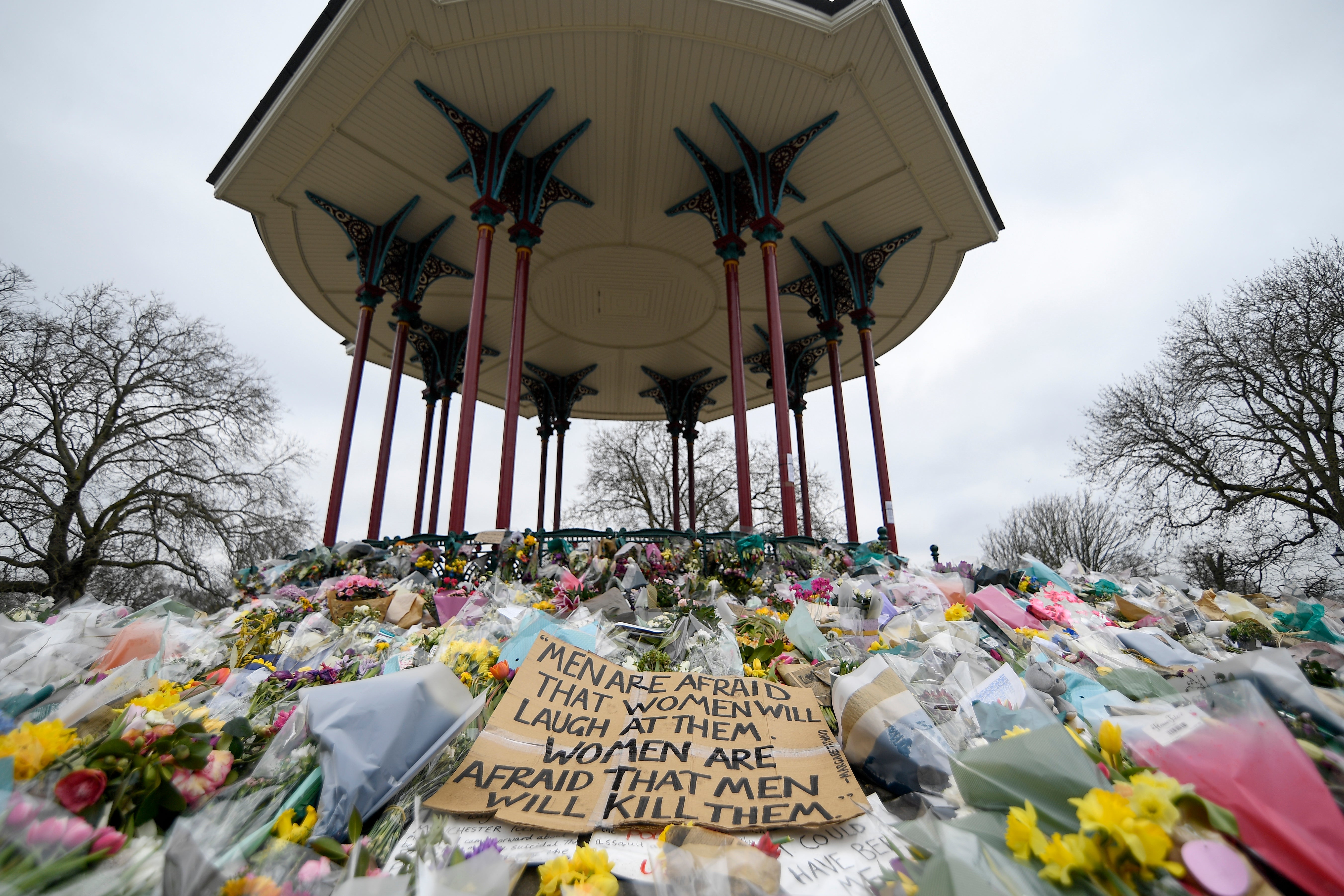The language we use allows misogynists like Wayne Couzens to go unchecked
Prior to being convicted of murder, former police officer Couzens was well known for making female officers feel uncomfortable. Yet, instead of reporting him, colleagues gave him the nickname ‘the rapist’


“Locker room banter” is the linguistic underbelly where chauvinism is cultivated and normalised. It’s a privileged inner sanctum within which some men get to mask their thinly-veiled misogyny behind “jokes”. There is a real difference between highlighting rampant societal misogyny through comedy and making sexist jokes or remarks which actually contribute to the very structure of sexism.
Belittling women through humour makes male violence socially acceptable. Sexist jokes deflect from misogynistic intent, often providing a carte blanche to share prejudicial ideas. This feeds into a culture where predatory behaviour is overlooked.
Prior to being convicted of murder, former police officer Wayne Couzens was well known for making female officers feel uncomfortable. Yet, instead of reporting him, colleagues gave him the nickname “the rapist”. Instead of confronting him, some shared misogynistic, racist and homophobic content. Just banter. Couzens had already exposed himself to several women before he went on to kidnap, rape and murder Sarah Everard.
The danger in trivialising rape and ridiculing threatening behaviour is that it compounds narratives that devalue women and normalises male-on-female violence. Sexualising and dehumanising women can be seen as a way for men to bond and reassert their fragile “masculinity’’.
Nowadays, online forums provide a disturbing space where angry men are encouraged to degrade women and enact violent compensatory fantasies behind the anonymity of online handles. "Rapeable" is actually defined on one website as “a person who is attractive enough to make the struggle of raping them worthwhile”.
There is a cognitive dissonance between public and private spheres when it comes to misogynistic language because in their everyday “real” lives, these men “respect” women. As passive bystanders to misogyny, language can be used to distance. This disconnect also enables men to pick and choose what constitutes harmful behaviour, ignoring the links between casual sexism and real-life violence, specifically that men who enjoy sexist jokes are more likely to rape women.
Sexism is part of a continuum of violence, contributing to systemic intimidation, discrimination and fear. This starts with degrading and misogynistic language from catcalling to seemingly harmless WhatsApp memes stigmatising women. It can lead to stalking, voyeurism, overt sexualisation and/or flashing. It can then escalate to groping, rape and murder. In the UK alone, a man kills a woman every three days.
The ubiquity of linguistic sexism means we are conditioned from a young age through ascribed language. In the UK, a survey showed 66 per cent of 16-18-year-old girls has experienced or witnessed sexist language at school.
Caroline Hickson, Director of the International Planned Parenthood Federation Europe says: “Sexist language that makes light of male violence normalises a coercive and threatening environment for women and more widely.” Discrimination against women is deeply rooted in linguistic structures and these language constructs form our prejudices. So, how can we tackle this?
Slight variations to grammatical structures can make a huge difference to gender biases. A study by Stanford University found that even a sentence like “girls are as good as boys at maths” can perpetuate stereotypes. Although it implies that both girls and boys are equally capable, the linguistic structure suggests boys are already better. “Boys” is the standard against which girls are measured. In changing it to “girls and boys are equally good at maths”, one gender is not prized over another.
Downplaying male violence with sayings like “boys will be boys” normalises everyday violence. Common idiomatic phrases like “pushover” or “roll with the punches” make violence acceptable vernacular. Even the language of sex is violent – “pounding”, “slamming”, “screwing” – as if sex should be automatically associated with aggression. We must change the narratives around men as strong and aggressive, and women as flexible and nurturing.
History has always marginalised women by placing men at the centre of culture. Men are depicted as the embodiment of humanity with expressions like “mankind”, erasing women completely. Biblical stories portray women as weak, sexual beings entirely dependent upon men. Disrupting these linguistic structures can help eliminate toxic masculinity and change the very definition of manhood.
We dress sexual violence up with euphemisms. Describing rapists and murderers as “monsters” reinforces the concept that “normal” men don’t commit sexual violence. They do. We are bombarded with language which frames women as the passive victims of mystery violence, as if violence just spontaneously happens. The passive sentence: “a woman was raped by the man” omits the man as the active agent. Instead we should say “a man raped the woman”. Words to describe sexual assault like “gender-based violence” or “violence against women” also exclude men as perpetrators, merely reinforcing sexism.
Although we can’t eliminate male violence simply by changing linguistic structures, we can tackle language that normalises misogyny, as language is the lens through which we perceive the world. We can reduce harmful stereotypes and constructs of masculinity, and help shift patterns of gender inequality and the acceptance of everyday sexism through changing the way we use language.
Sexual violence and femicide are men’s problems. Reflexively responding with “not all men” to incidences of sexual violence and femicide detracts from the salient issue. Couzens raped and murdered Sarah Everard. His ongoing sexual predation was tolerated through mockery and acceptance.
So, to reframe: not all men are calling out their friends and colleagues for sexist behaviour and derogatory jokes. Not all men are challenging misogynistic language. Not all men are modelling respect, equality and kindness. Oppressive language is violence. But so is their silence
Join our commenting forum
Join thought-provoking conversations, follow other Independent readers and see their replies
Comments
Bookmark popover
Removed from bookmarks